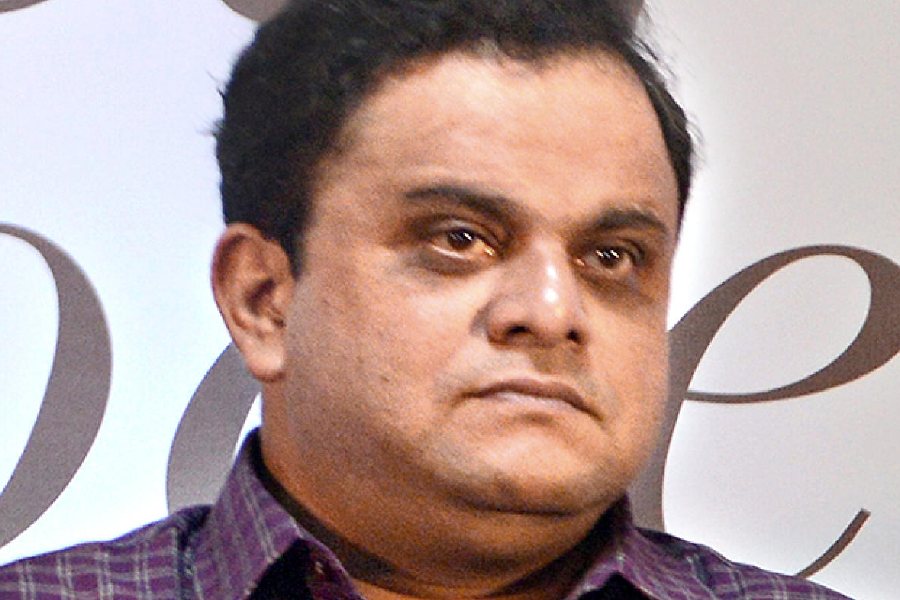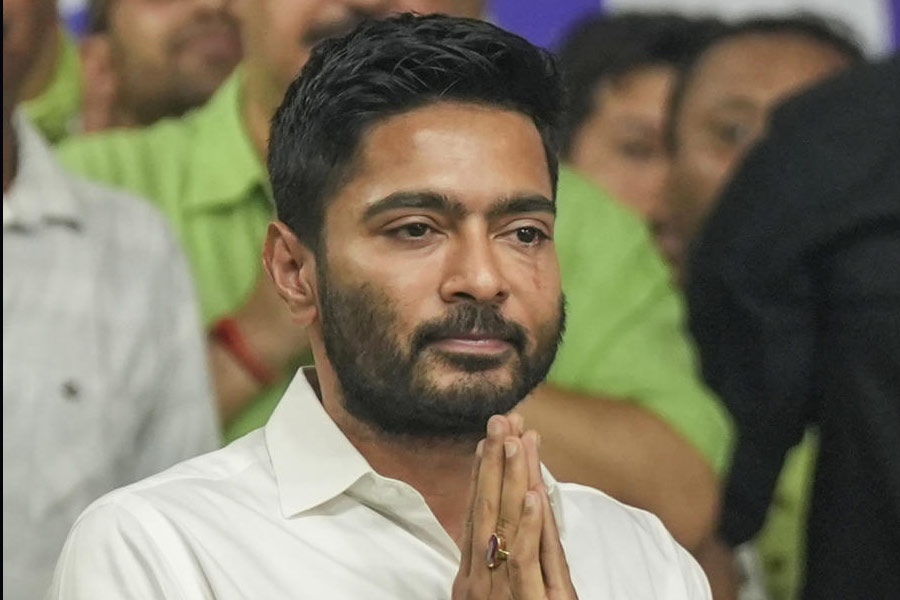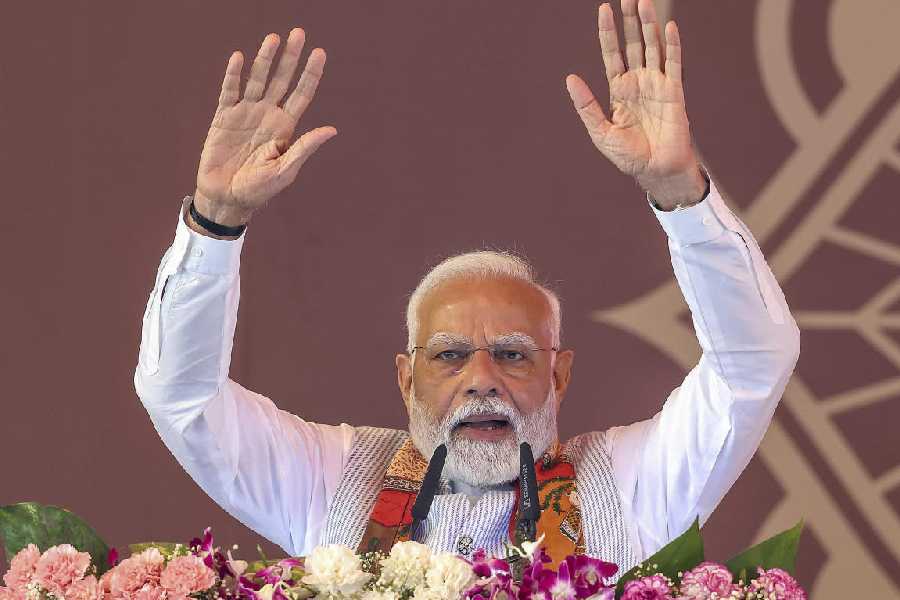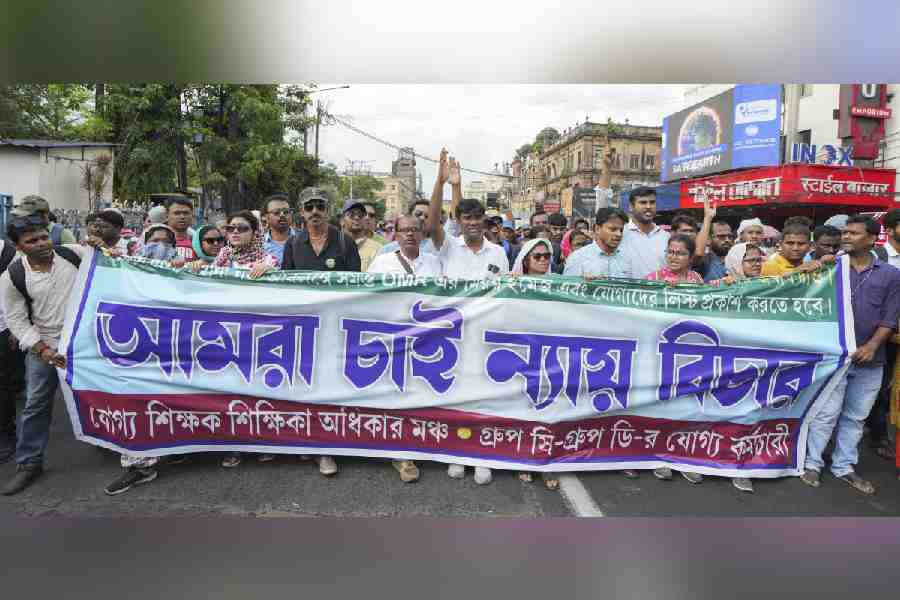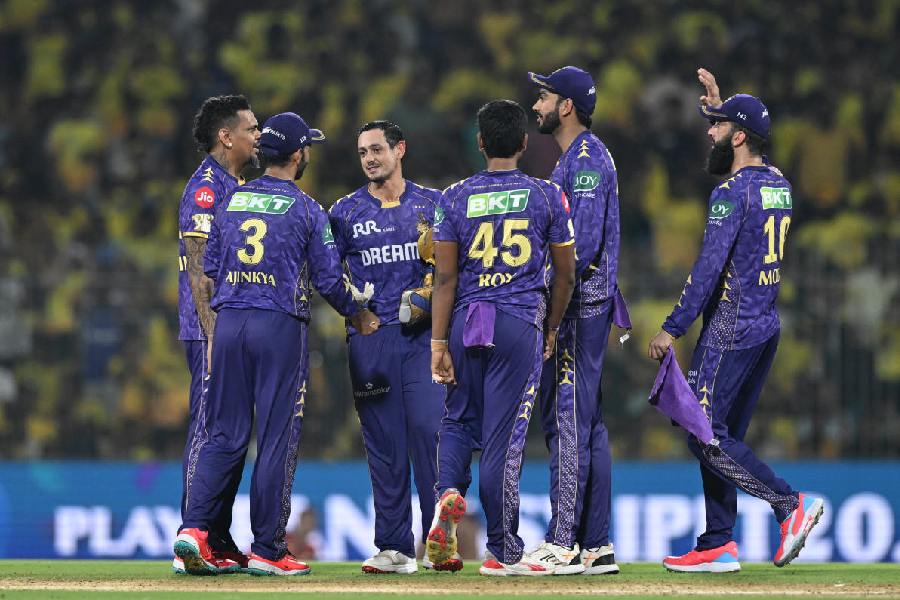 |
| Rajeev Goswami, who set himself on fire in 1990. (AFP) |
New Delhi, Feb. 24: Rajeev Goswami, the burning face of the anti-Mandal movement of 1990, died today, forgotten by those who reaped the benefit of the shock wave his self-immolation bid sent across the country.
The 33-year-old Rajeev breathed his last this morning of jaundice-induced complications. None of his friends or politicians who stood behind him 14 years ago when he set himself on fire and electrified a controversial agitation was by his side.
The body of Rajeev, who was suffering from complications in his liver and both kidneys, was consigned to flames at a crematorium in south Delhi’s Kalkaji with only family members and a handful of journalists present. Rajeev is survived by his wife and two children — a four-year-old daughter and a one-year-old son.
“But for the family members, no one ever came to find out what Rajeev was doing or how he was leading his life,” his brother-in-law Mahendra Goswami said.
“Lakhs of people collected funds in the name of helping Rajeev, who had received severe burns, but that money never went to him,” he added.
In 1990, the then 20-year-old Rajeev, a commerce student of Delhi University’s Deshbandhu College, had poured oil and set himself on fire amid a crowd of supporters and spectators in one of the most divisive phases since Independence.
Like hundreds of upper caste students in northern India, Rajeev was protesting against the V.P. Singh government’s decision to revive the recommendations of the Mandal Commission, which had suggested 27 per cent quota for backward classes.
Till Rajeev lit the match, the agitation was being viewed as a campaign aimed at derailing social reforms and not many were willing to speak up in defence of the opponents of reservation — a political holy cow.
But Rajeev’s reckless act changed the tone and texture of the agitation, which overnight came to be viewed as a movement spearheaded by selfless youths. It also brought to northern India a mode of protest as well as mourning usually seen till then in Tamil Nadu — self-immolation.
Such was the polarisation over the reservation issue that it forced the hand of the BJP to step up the tempo of the temple movement to blunt the edge of V.P. Singh’s quota card. The strategy — captured in the slogan kamandal versus Mandal — eventually led to the demolition of Babri Masjid and the rise of the BJP as a party that can win elections.
Rajeev survived the self-immolation bid with 85 per cent burns but never recovered fully from the misadventure.
The anti-reservation movement eventually died down and the Narasimha Rao government, which succeeded the V.P. Singh regime, implemented the Mandal recommendations. “Rajeev used to lament that the self-immolation attempt did not have any impact,” Mahendra said.
Rajeev’s sole moment of glory since the self-immolation bid came when the human torch tag helped him win the Delhi University Students’ Union president post as an Independent. He later joined a factory owned by another brother-in-law.
Rajeev’s parents, Madan Lal and Nand Rani, flew back from America after they learnt that his condition was deteriorating. The retired postmaster and his wife are living in the US with one of their six daughters. Rajeev was their only son.


